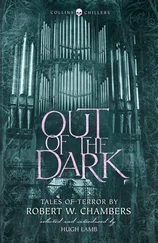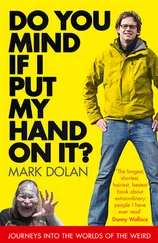Robert Monroe - Journeys out of the body, Practical Guidebook
Здесь есть возможность читать онлайн «Robert Monroe - Journeys out of the body, Practical Guidebook» весь текст электронной книги совершенно бесплатно (целиком полную версию без сокращений). В некоторых случаях можно слушать аудио, скачать через торрент в формате fb2 и присутствует краткое содержание. Жанр: Старинная литература, на английском языке. Описание произведения, (предисловие) а так же отзывы посетителей доступны на портале библиотеки ЛибКат.
- Название:Journeys out of the body, Practical Guidebook
- Автор:
- Жанр:
- Год:неизвестен
- ISBN:нет данных
- Рейтинг книги:5 / 5. Голосов: 1
-
Избранное:Добавить в избранное
- Отзывы:
-
Ваша оценка:
- 100
- 1
- 2
- 3
- 4
- 5
Journeys out of the body, Practical Guidebook: краткое содержание, описание и аннотация
Предлагаем к чтению аннотацию, описание, краткое содержание или предисловие (зависит от того, что написал сам автор книги «Journeys out of the body, Practical Guidebook»). Если вы не нашли необходимую информацию о книге — напишите в комментариях, мы постараемся отыскать её.
Journeys out of the body, Practical Guidebook — читать онлайн бесплатно полную книгу (весь текст) целиком
Ниже представлен текст книги, разбитый по страницам. Система сохранения места последней прочитанной страницы, позволяет с удобством читать онлайн бесплатно книгу «Journeys out of the body, Practical Guidebook», без необходимости каждый раз заново искать на чём Вы остановились. Поставьте закладку, и сможете в любой момент перейти на страницу, на которой закончили чтение.
Интервал:
Закладка:
The effectiveness of REM-detecting devices is more plausible in theory than in practice. The mind quickly develops a tolerance for these types of external stimuli and stops reacting, and, as a result, such technologies are hardly used more than one or two nights per week. Secondly, a practitioner will detect only a small portion of the signals, and conscious reaction occurs in even smaller instances.
Cueing technologies are best used to send signals that allow a practitioner to awaken without moving during REM sleep, which facilitates a high probability of phase entrance through indirect techniques.
Pricing of these “mind-machines” (the common moniker of any device that purports to produce altered consciousness) widely varies and is determined by quality of REM detection and signaling.
Available models include:
DreamStalker, DreamMaker
(NovaDreamer), REM-Dreamer, Astral Catapult, among many others. Since the use of these devices does not guarantee increased success in practice, investing money in the technology is not recommended. If a practitioner is curious about cueing technologies, similar devices may be constructed at home using a special computer program and a run-of-the-mill optical mouse. Designs for a homegrown setup are easily located on the Internet.
Another do-it-yourself way of experimenting with cueing is through the use of a computer, a music player, or even the alarm clock function on a mobile phone. The practitioner saves short sounds or phrases, played as an alarm every 15 to 30 minutes while sleeping. These sounds will signal the practitioner to wake up and attempt indirect techniques.
If the practitioner decides to use cueing technology, several fundamental principles should be considered as results will be less likely if they are ignored. First, mind-machines should be used no more than twice a week. Otherwise, too high a tolerance will be built up, rendering the machines ineffective. Second, use cueing technology in combination with the deferred method, which was covered in the section on indirect techniques. It is better to sleep for six hours without distraction and then, after sleep has been interrupted, put on a sleep-mask or earpiece and continue sleeping.
Sleep will be light for the remaining two to four hours as there will be more REM sleep, making it easier for the mind to detect cueing signals. Finally, master indirect techniques before making use of cueing technologies to attain dream consciousness and subsequent phase entrance.
WORKING IN PAIRS
Working in pairs is considered the second most effective non-autonomous methods of entering the phase. One practitioner is to be the active one, and the other fills the role of helper. The active one practitioner attempts to enter the phase while the helper provides various types of support to this end.
For example, the active practitioner lies down in bed while the helper stays nearby, waiting for the active one to fall asleep. When sleep occurs, the helper observes the eyes of the active, watching for the signs of REM sleep, which is mainly characterized by quick eye movements. When REM is apparent, the helper whispers to the sleeper, communicating that everything the practitioner is experiencing is a dream. The helper may vary the volume of the whisper, use touch to strengthen the signal, or shine a flashlight on the sleeper’s eyelids – which is very effective.
The active practitioner should detect the signals without waking and indicate a state of conscious awareness by performing quick, cyclical eye movements. If no such indication is given, the helper continues to rouse the active practitioner, who may finally wake.
If the active practitioner is unable to stay in the dream, indirect techniques should be performed. The active practitioner should under no circumstances move upon awakening or waste valuable seconds before transitioning to indirect attempts. If phase entrance does not occur after exercising the techniques, the practitioner should again fall asleep with the intention of making another attempt.
Generally, several such attempts are enough to glean results.
Working in pairs is best performed just prior to a daytime nap, or with the same deferred method used for indirect techniques - an early-morning interruption of a practitioner’s nighttime sleep.
TECHNOLOGIES FOR INDUCING THE PHASE
The ambition to create a device facilitates quick and easy phase entrance has led to the appearance of assorted technologies that claim to fulfill such a role. As already stated, none of these devices has been proven effective.
The most famous of these is the Hemi-Sync system, which purports to synchronize the two hemispheres of the brain. Hemi-Sync was developed by Robert Monroe, an American esotericism expert researcher. The idea behind Hemi-Sync is that out-of-body sensations may be induced by achieving synchronization of the brain’s two hemispheres. However, this type of approach yields a paradox for the lack of scientific (or pseudo-scientific) evidence that hemispheric synchronization influences sensory perception. Actually, it is the cerebral cortex and constituents that are primarily responsible for sensory perception. At the beginning of the 20th century, it became clear that the key roles in sensory processes are played by varying levels of inhibition and activity in the cerebral cortex, and almost not elsewhere.
The key to solving the problem of technologically induced phase entrance rests in the inhibition processes of the cerebral cortex.
Synchronization devices have no effect on the operation of the cerebral cortex. The idea of using sounds of various frequencies to induce a specific level of electrical activity in the brain is, so far, considered impossible. Thus, the sounds and noises used to assist separation from the body cannot directly affect the process, but merely serve as cueing signals. Such a system works only after having been used for a long time, if it works at all. Moreover, it might only work once or twice. Nevertheless, synchronization systems are able to help practitioners reach a free floating state of consciousness since the systems prevent sleep or induce wakefulness, providing fertile ground for direct phase entry. However, the systems have nothing at all to do with synchronizing the two hemispheres of the brain.
The idea of inducing various phase states through sound has gained wide attention. Many other programs and technologies have appeared as a result, including, for example, the Brain Wave Generator (BWG), which allows the practitioner to independently experiment with a wide array of sounds and frequencies and various methods of transmission. The effect is the same: cueing during sleep or the maintenance of a transitional state. Thus, there is no noticeable difference between using machines and listening to similar sounds or musical compositions.
Inasmuch as the devices described above have not delivered notable result, the search for new technologies continues unhindered.
The number of ideas to exert noninvasive influence over the brain and its constituent parts is increasing. For example, there is a theory that phase experiences may be induced by electromagnetically stimulating the left angular gyrus. However, this, like all other non-autonomous methods, is strictly based on theory. At present, consistent, focused, unassisted practice is the simplest and only guaranteed means to achieving phase entrance.
HYPNOSIS AND SUGGESTION
Hypnosis is a little-studied method of entering the phase. The idea is that a hypnotist is able to cause a person to enter the phase through suggestion or affirmation. There is no doubt that hypnosis is an interesting concept, especially for persons who easily yield to power of suggestion, but such individuals account for only 1% of the population.
Читать дальшеИнтервал:
Закладка:
Похожие книги на «Journeys out of the body, Practical Guidebook»
Представляем Вашему вниманию похожие книги на «Journeys out of the body, Practical Guidebook» списком для выбора. Мы отобрали схожую по названию и смыслу литературу в надежде предоставить читателям больше вариантов отыскать новые, интересные, ещё непрочитанные произведения.
Обсуждение, отзывы о книге «Journeys out of the body, Practical Guidebook» и просто собственные мнения читателей. Оставьте ваши комментарии, напишите, что Вы думаете о произведении, его смысле или главных героях. Укажите что конкретно понравилось, а что нет, и почему Вы так считаете.










